
Detail of the rear face of the bow of a bow-back Windsor armchair, John Letchworth, Philadelphia, Pa., ca. 1787–1792. Yellow poplar (seat), maple, oak, hickory, and black walnut (arms and arm supports) (microanalysis). H. 37", W. (arms) 20 7/8", D. (seat) 17 3/4". (Courtesy, Winterthur Museum, acc. 57.99.2.)
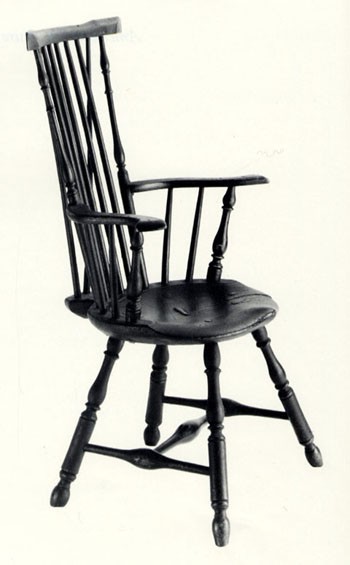
Fan-back Windsor armchair, southeastern Pennsylvania, ca. 1764–1770. Yellow poplar (seat). H. 40 1/2", W. 26 1/2", D. 23 1/4". (Courtesy, Chester County Historical Society, West Chester, Pa.; photo, Winterthur Museum.)

Detail of the seat bottom of the chair illustrated in fig. 2. (Photo, Winterthur Museum.)

Child’s square-back Windsor side chair, George Dewey, Litchfield, Conn., 1815–1824. Basswood (seat, microanalysis). H. 20 1/4", W. (crest) 12 3/4", D. (seat) 12 3/4". (Private collection; photo, Winterthur Museum.)

Sack-back Windsor armchair, Rhode Island, 1780–1790. White pine (seat), maple, oak, and birch (microanalysis). H. 36 13/16", W. (arms) 25 1/4", D. (seat) 15". (Courtesy, Winterthur Museum, acc. 65.836.)
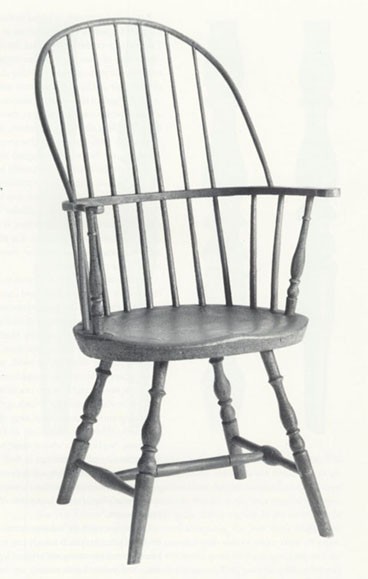
Sack-back Windsor armchair, Connecticut-Rhode Island border region, 1790–1800. White pine (seat), maple, and oak (microanalysis). H. 41 3/4", W. (arms) 24 1/2", D. (seat) 16 1/2". (Courtesy, Winterthur Museum, acc. 65.3027.)

Detail of Windsor chair legs. (Left to right) probably York Co., Pa. (a), and Rhode Island (b–d); 1800–1815, 1785–1790, 1790–1800 (c–d). Maple (legs, microanalysis). H. 38 7/8", 43 7/16", 37 1/2", 39 1/2"; W. (arms) 23 1/2", 24 13/16", 25 1/4", 23 3/16"; D. (seat) 18 3/4", 16", 15 5/8", 15 1/2". (Courtesy, Winterthur Museum, acc. 65.837; 59.1628; 69.230.)
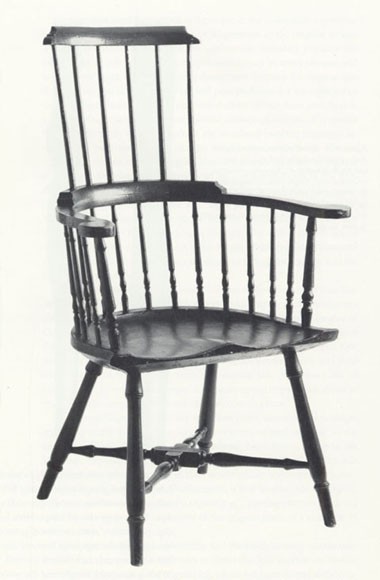
High-back Windsor armchair, Rhode Island, 1760–1770. Maple and ash (microanalysis). H. 42 1/16", W. (arms) 28", D. (seat) 16 1/8". (Courtesy, Winterthur Museum, acc. 65.3025.)

High-back Windsor armchair, Rhode Island, 1760–1770. Maple and hickory (microanalysis). H. 42 7/8", W. (arms) 26 5/8", D. (seat) 21 3/4". (Courtesy, Winterthur Museum, acc. 59.1667.)

Low Windsor stool, New England, 1850–1870. White pine (seat), maple, white pine, and birch (microanalysis). H. 13", W. (seat) 17 3/4", D. (seat) 11 3/8". (Courtesy, Winterthur Museum, acc. 59.1659.)
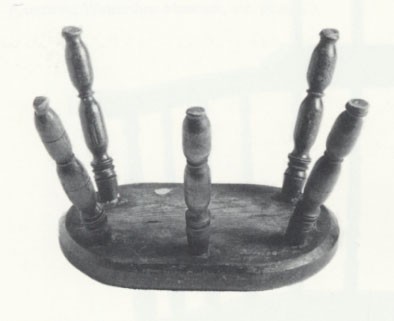
Underside of the stool illustrated in fig. 10. (Photo, Winterthur Museum.)
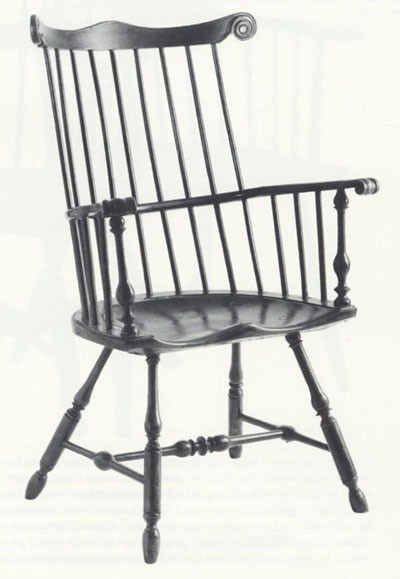
High-back Windsor armchair, Philadelphia, Pa., ca. 1754–1760. Yellow poplar (seat), maple, oak, and ash (microanalysis). H. 42", W. (arms) 28 3/4", D. (seat) 17 3/4". (Courtesy, Winterthur Museum, acc. 59.1572.)

Detail of a crest scroll of a high-back Windsor armchair, Philadelphia, Pa., ca. 1765. Yellow poplar (seat), maple, oak, and hickory. H. 44 5/8", W. (arms) 25 5/8", D. (seat) 16". (Private collection; photo, Winterthur Museum.)
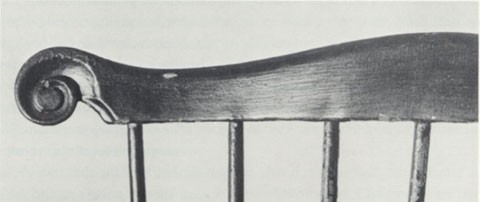
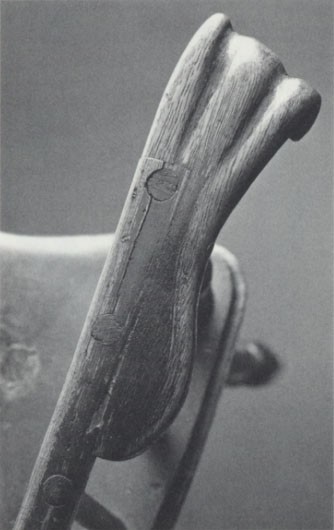
Detail of an arm terminal of the chair illustrated in fig. 12. (Photo, Winterthur Museum.)

Square-back Windsor side chair converted to rocker, Cornelius Timpson and John Vangelder, New York City, 1799–1801. Yellow poplar (seat), maple, and other woods. H. 29
1/2", W. (rockers) 21 1/8", D. (rockers) 21". (Courtesy, Winterthur Museum, acc. 81.41.)
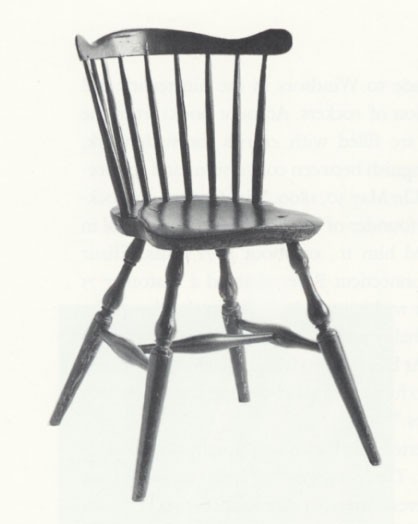
Fan-back Windsor side chair, northeastern coastal Connecticut, 1790–1800. Basswood (seat), maple, and hickory (microanalysis). H. 30 3/8", W. (crest) 18 3/8", D. (seat) 15 7/8". (Courtesy, Winterthur Museum, acc. 59.2081.)
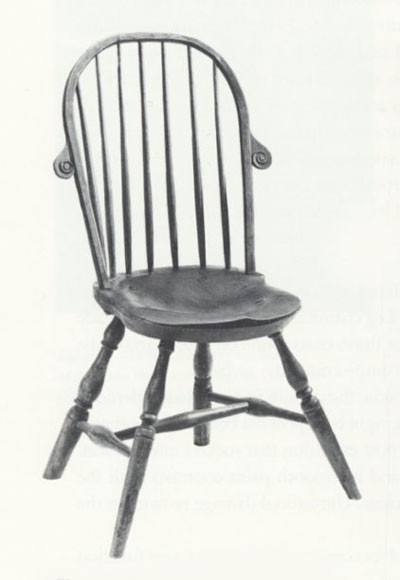
Bow-back Windsor side chair, Connecticut-Rhode Island border region, 1795–1805. Cottonwood (seat), maple, oak, and hickory (microanalysis). H. 34 9/16", W. (seat)
14 5/16", D. (seat) 16 1/2". (Courtesy, Winterthur Museum, acc. 64.1173.)

Detail of the front leg-seat joint of the chair illustrated in fig. 18. (Photo, Winterthur Museum.)

Triple sack-back Windsor settee, eastern Connecticut or Rhode Island, 1790–1805. White pine (seat), maple, oak, and hickory (microanalysis). H. 40 1/2", W. (arms) 81 3/4", D. (seat) 23 5/8". (Courtesy, Winterthur Museum, acc. 59.151.)
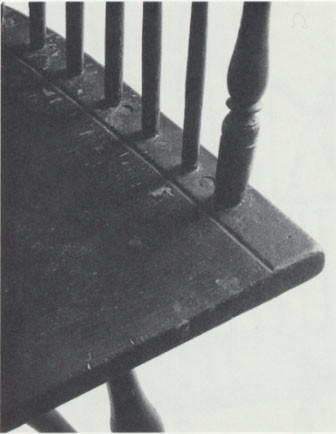
Detail of the right front seat corner and arm supports of the chair illustrated in fig. 20. (Photo, Winterthur Museum.)
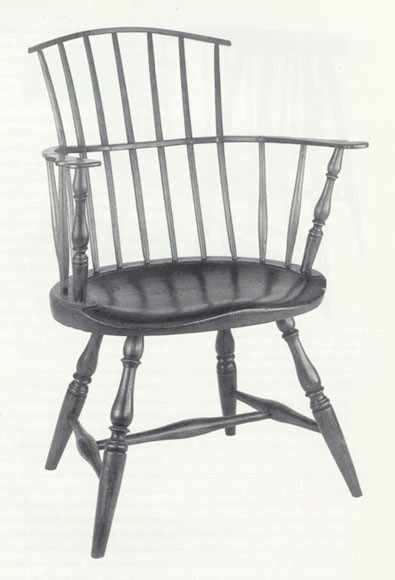
Sack-back Windsor armchair, Connecticut-Rhode Island border region, 1790–1800. Maple, oak, and other woods; dimensions unknown. (Former collection of J. Stogdell Stokes; photo, Philadelphia Museum of Art.)
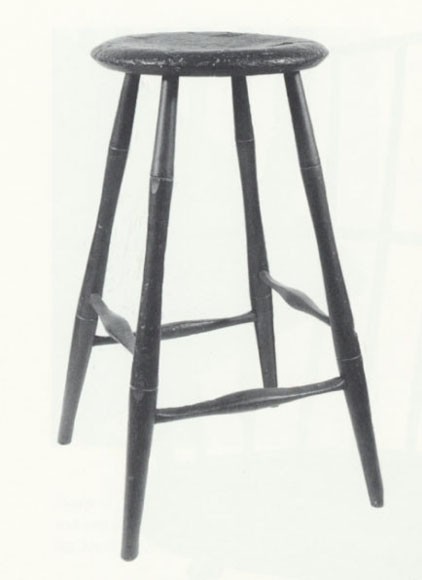
High Windsor stool, eastern United States, probably New England, style of 1795–1810. Basswood (seat) and maple (microanalysis). H. 27 1/2", Diam. (top) 14"–14 1/4". (Courtesy, Winterthur Museum, acc. 58.120.4.)
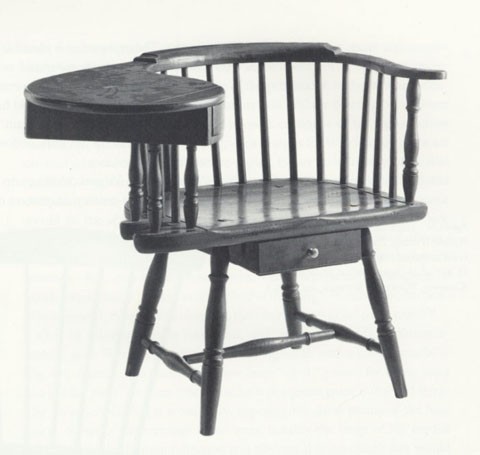
Low-back Windsor writing-arm chair, eastern United States, probably Virginia, possibly nineteenth century in style of ca. 1768–1776. American black walnut and yellow pine (microanalysis). H. 30 1/16", W. (arms)
39 3/8", D. (seat) 18 3/8". (Courtesy, Winterthur Museum, acc. 59.1394.)
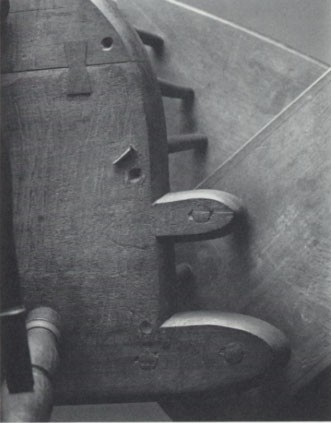
Detail of the seat bottom of the chair illustrated in fig. 24. (Photo, Winterthur Museum.)
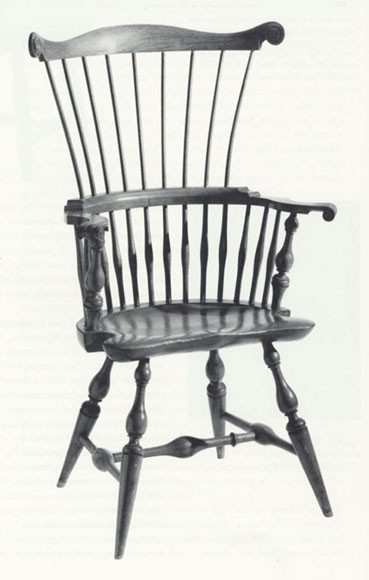
High-back Windsor armchair, Wallace Nutting, Framingham, Massachusetts, 1930s in style of 1780s. Pine (seat) and oak. H.
43 15/16", W. (arms) 26 11/16", D. (seat) 22 1/8". (Courtesy, Winterthur Museum, acc. 77.54.)

Continuous-bow Windsor highchair, Wallace Nutting, Framingham, Mass., 1930s in style of 1790s. White pine (seat), birch, and oak (microanalysis). H. 37", W. (arms) 15 1/8", D. (seat) 12 3/4". (Courtesy, Winterthur Museum, acc. 58.635.)
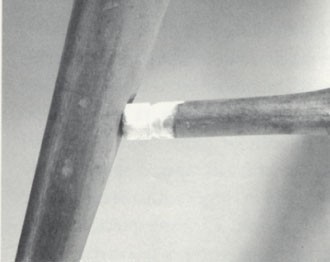
Detail of the leg and stretcher joint of the chair illustrated in fig. 27. (Photo, Winterthur Museum.)
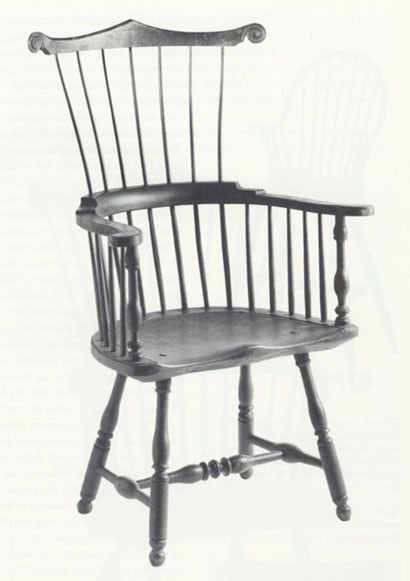
High-back Windsor armchair, eastern United States, probably Pennsylvania, twentieth century in style of ca. 1754–1760. Yellow poplar (seat), oak, hickory, and pear (microanalysis). H. 41 11/16", W. (arms) 25", D. (seat) 15 13/16". (Courtesy, Winterthur Museum, acc. 59.1609.)

Detail of the seat bottom of the chair illustrated in fig. 29. (Photo, Winterthur Museum.)
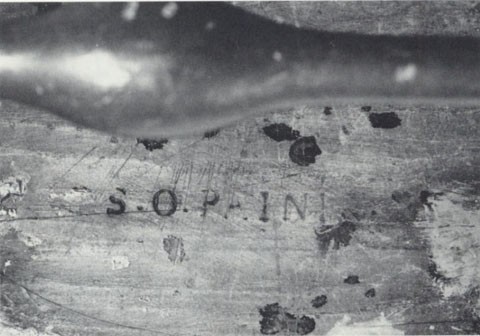
Detail of name brand on seat bottom of low-back Windsor armchair, Philadelphia, Pa., ca. 1760. H. 28 1/4", W. (seat) 24 13/16", D. (seat) 17 1/8". (Courtesy, Independence National Historical Park, Philadelphia; photo, Winterthur Museum)
